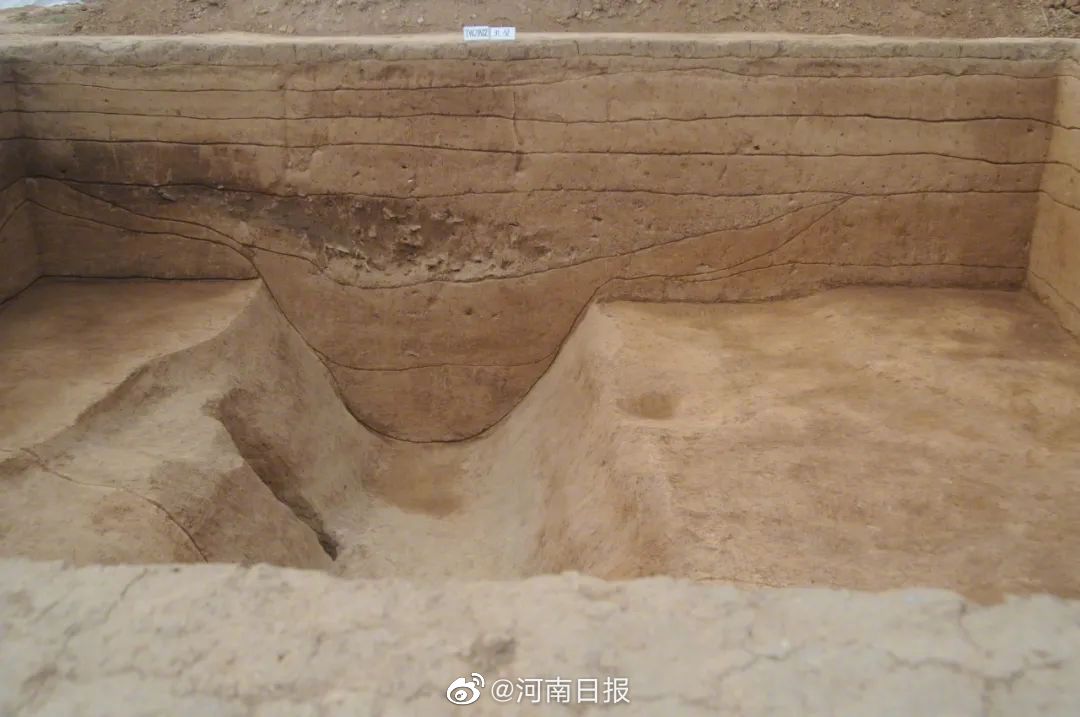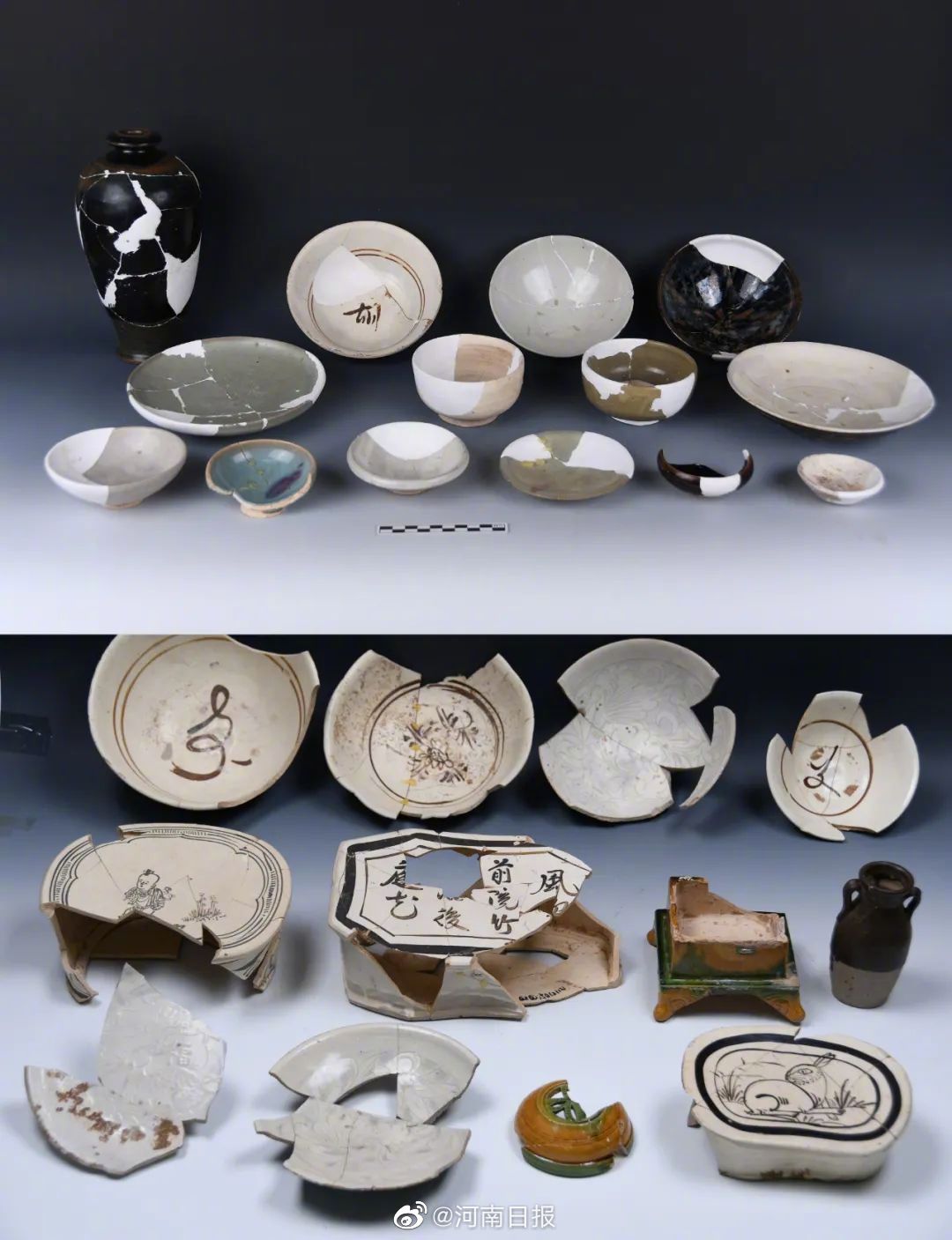
Photo: Henan Daily
On the western side of the Mausoleum of Cao Cao, a prominent warlord of the late Eastern Han dynasty (25-220), Chinese archaeologists have discovered ruins dating from the Song Dynasty (960-1279) to the Yuan Dynasty (1279-1368). They believe that it may be the site of the guarding household set up for Cao's mausoleum during the Northern Song Dynasty.
According to results published on the website of the Henan Provincial Institute of Cultural Heritage and Archeology, there were many diverse cultural relics such as items of porcelain and pottery that were unearthed at the site in Anyang, Central China's Henan Province.
The ditch found in the exploration has been excavated as a ruin of a drainage ditch. The proven length is 160 meters. Warp soil was detected at the bottom of the ditch and the upper accumulation can be divided into three layers, containing a large number of porcelain pieces and other relics. This shows that the ditch was used as a drainage ditch at first and was gradually filled with waste.

Photo: Henan Daily
A large number of cultural relics were unearthed in the ditch, including porcelain, copper ware, and pottery ware. They were mainly daily-use items such as bowls and plates.
Meanwhile, large amounts of Song Dynasty coins and utensils for entertainment purposes were also discovered in the ruins, indicating that some public entertainment activities were held there. Researchers speculated that the structures at the site may not have been ordinary dwellings.
The differences in the shapes and making skills of the relics show that the functions of architecture changed many times in the Song, Jin and Yuan dynasties.
Based on all the discoveries in the ruins, archaeologists considered that the architectural ruins found on the west side of Cao's mausoleum are probably related to the mausoleum governing household, which might have been set up in the Northern Song Dynasty after the central government moved to the southern area, and the place was occupied by Jin and Yuan dynasties.
The mausoleum governing household should be the last witness of Cao's tomb and the original building was converted to other uses after being occupied.
Cao is a widely known historical figure in China and the location of his tomb was a mystery for centuries. The tomb was found in December 2008 when workers at a nearby kiln were digging for mud to make bricks. After being announced in 2009, the discovery made global headlines.
URL: https://www.seeglobalnews.com/read-1112.html